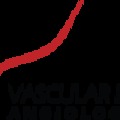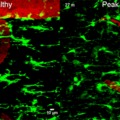 Véget ért az ISNVD 2015-ös konferencia, ahol bemutatták a legújabb tudományos eredményeket, melyek a véráramlás és az idegrendszer kapcsolatáról szólnak. Mivel ez főként orvosokat érdekel és az anyag szerencsére hatalmas, ezért nem tudom még csak összegezni sem, vagy az összegzéseket lefordítani sem.
Véget ért az ISNVD 2015-ös konferencia, ahol bemutatták a legújabb tudományos eredményeket, melyek a véráramlás és az idegrendszer kapcsolatáról szólnak. Mivel ez főként orvosokat érdekel és az anyag szerencsére hatalmas, ezért nem tudom még csak összegezni sem, vagy az összegzéseket lefordítani sem.
Itt letölthetők a 2015-ös absztraktok (pdf). Ami jól látható számomra: a CCSVI kutatás gőzerővel zajlik és új területek nyílnak. Íme egy rövid összegzés Joan tollából:
2D and 3D analysis of vessels in the retina and the brain
Prof. Bart ter Haar Romeny, Ph.D.1,2
1Eindhoven University of Technology, Eindhoven, the Netherlands 2Northeastern University, Shenyang, China
This research is using the imaging of blood vessels in the eye's retina to get a picture of how blood is circulating throught the central nervous system. The blood vessels in the retina give an early picture of how brain diseases and breakdown of the blood brain barrier might be developing. Scanning the eye is easier and more cost-effective, as well.
Venous dysfunction and neurodegenerative diseases
Chih-Ping Chung MD PhD
Taipei Veterans General Hospital, National Yang Ming University, Taipei, Taiwan
Dr. Chung and his group have been studying the venous vasculature in relationship to brain disorders for over a decade. He has spoken at a few of the ISNVD conferences now. His new research focuses on how venous abnormalities are linked to white matter changes and how venous drainage impairment leads to dysfunction in Alzheimer's Disease.
Clive B Beggs 1, Simon J Shepherd 1, Pietro Cecconi 2 and Maria Marcella Lagana 2Medical Biophysics Laboratory, University of Bradford, Bradford, BD7 1DP, UK Fondazione Don Carlo Gnocchi ONLUS, IRCCS S. Maria Nascente. Milan, Italy
This study measured blood flow throughout the cardiac cycle by using MRI to visualize the flow in the necks of 14 healthy adults. This study found that it is cerebrospinal fluid (CSF) which controls the volume changes inside the brain. CSF interacts with the cortical veins to facilitate how much blood is stored. This is an important finding, because any disturbance in venous outflow of blood and CSF will change the blood storage inside the skull, potentially leading to reduced cerebral circulation.
Hector Ferral, MD
Senior Clinical Educator NorthShore University Health System
Dr. Ferral has been treating people with CCSVI for a few years now. He has also been an attendee and presenter at the ISNVD before. His new presentation will be looking at the technical advances being made in vein measurement and treatment of CCSVI.
Imaging of Brain Microvascular Disorders: lessons from the CADASIL model.
This research uses imaging to look at how the small vessel disease related to stroke and dementia develops and progresses.
Endothelin- 1 as a potential target for chronic brain hypoperfusion
Jacques De Keyser, MD, PhD, Free University of Brussels (VUB), Department of Neurology, Brussels, Belgium
This study is near and dear to my heart, as it is looking at how ET-1, a marker of endothelial dysfunction, is related to slowed blood flow in the brain, called hypoperfusion. People with MS have much higher levels of ET 1 in their blood than normals, and much slower cerebral blood flow. We also see this marker elevated in a number of neurodegenerative diseases, like Alzheimer's. In this study, the researchers used bosentan, a blood pressure medication, to treat ET 1 levels. This treatment increased cerebral blood flow in pwMS, and lowered ET-1 levels. (But bosentan has side effects, and is not easy on the liver. Much better, in my opinion, to lower ET-1 levels by addressing endothelial dysfunction, through diet, exercise, and lifestyle.)
TBI and hemodynamic changes in the brain
James R. Stone, MD, PhD
This presentation is looking at how traumatic brain injury induces ischemia, or a low-oxygen state, in the brain. TBI also changes cerebral blood flow and can cause a break in the blood brain barrier, igniting the immune system. New research is showing how explosive devices can cause TBI, even without direct physical contact.
Ultrasound contrast imaging of brain hemodynamic and perfusion Marcello Mancini, M.D.
Institute of Biostructure and Bioimage – CNR
Naples, Italy
E. Mark Haacke, PhD
Dr. Haacke, a presenter at all of the ISNVD conferences, returns this year to discuss how his invention of susceptibility weighted imaging (SWI) and MRA can be used to study the neurovascular system, and clarify the relationship between the venous sytem and CSF.
Update in computational fluid modelling of the brain
Mauro Ursino
This presentation is using mathmatical and computer models to simulate the complex mechanisms affecting cerbral circulation. Using these models shows how postural changes and stenosis in extra cranial arteries and veins can change upstream intercranial circulation.
Clinical Applications of Venous Treatment
Dr. Michael Dake, Stanford University
MJ Daemen
Dr. Daemen is the keynote guest speaker. He is a neurocardiologist, a member of a new field of experts who are bringing together an understanding of how the heart and brain affect each other. As a member of the Dutch Heart Foundation, his group is looking at how cardiovascular disease is influencing cognitive function and cerebral circulation.
A NOVEL SONOGRAPHIC METHOD FOR REPRODUCIBLE JUGULAR VEIN PULSE WAVE ASSESSMENT
Paolo Zamboni, Francesco Sisini, Erica Menegatti, Giacomo Gadda, Mirko Tessari, Mauro Gambaccini
Vascular Diseases Center, University of Ferrara, Ferrara, Italy
Is there a role for mast cells dependent synthesis of Endothelin-1 in neurodegenerative diseases?
Pedro D’Orléans-Juste-1, Louisane Desbiens, Denis Gris-2
Departments of Pharmacoly-1 and of Pediatrics-2, Faculty of Medicine, Université de Sherbrooke, Sherbrooke, PQ, Canada
Roberto De Simone, Angelo Ranieri
Headache Centre Dpt. of Neurosciences, Reproductive Sciences and Odontostomatology University of Naples “Federico II”
In Endothelial function, the glymphatic system and New Drug Development
Endothelial dysfunction in neurodegenerative disease
J. Winny Yun, Emily Stevenson, Seiichi Omura, Fumitaka Sato, Ikuo Tsunoda, Alireza Minagar, Felix Becker, Trevor Castor, Adam Xiao, J. Steven Alexander, LSUHSC-Shreveport Molecular and Cellular Physiology, Microbiology, Virology, Neurology, Shreveport, Louisiana, USA.
Dr. Steven Alexander from LSU returns to the ISNVD to again discuss the endothelium in neurovascular disease. There is a vascular association of specific biomarkers found in MS. This new research is looking for a means to regulate these neurolymphatic markers, to help those with neurovascular diseases.
Fluid Dynamic Influences on Cerebrovascular Endothelial Activation Responses
Dr. Alexander and the LSU team look at how blood flow over endothelial cells affect their health. Laminar shear stress (regular blood flow) over endothelial cells is essential to their function. Disrupted flow causes endothelial cells dysfunction and death. Shear stress alterations could lead to a break down of the endothelial layer in the brain, and create a disturbance in the blood brain barrier and inflammation.
Cardiovascular risk factors and neurodegenerative disorders
Dr. Robert Zivadinov
Buffalo Neuroimaging Analysis Center, Department of Neurology, University at Buffalo, State
-------------------------------------------------------------------------
A 2014-es kutatási anyagok:

Véget ért az ISNVD 2014 -es konferencia, ahol bemutatták a legújabb tudományos eredményeket, melyek a véráramlás és az idegrendszer kapcsolatáról szólnak. Mivel ez főként orvosokat érdekel és az anyag szerencsére hatalmas, ezért nem tudom még csak összegezni sem, vagy az összegzéseket lefordítani sem.
Ami jól látható számomra: a CCSVI kutatás gőzerővel zajlik és új területek nyílnak. Figyelemre méltó például számomra az SM-en kívül, hogy Dr. Haacke vénás áramlási problémákat talált Parkinson kórban is.
Itt letölthető az ISNVD 2014 newsletter pdf-ben, melyben találunk rövid összefoglalókat az előadásokról.
Itt letölthető az ISNVD 2014 Program Book pdf-ben, melyben megtalálhatóak az előadások abstract-jai.
Itt alant pedig az egyes előadások prezentációi tölthetőek le:
|
Dr. Paula Grammas |
|
|
Welcome Reception |
|
|
Welcome and Introduction |
|
|
Session 1: A Multi-Modality Approach to Extra Cranial Venous Disease |
Session Chairpersons: Dr. Robert Zivadinov |
|
The Current Status of Ultrasound Imaging for the Screening of CCSVI |
Dr. Marcello Mancini |
|
What is the Normal Jugular Vein Valve Function? |
Dr. Erica Menegatti |
|
Dr. Lindsay Machan |
|
|
Identifying CCSVI with Cervical Plethysmography |
Dr. Paolo Zamboni |
|
Diagnostic Contributions of Catheter Venography for Screening of CCSVI |
Dr. Hector Ferral |
|
What Additional Information Can Intravascular Ultrasound Provide? |
Dr. Adnan Siddiqui |
|
Dr. Steven Alexander |
|
|
State of the Art I: Why We Need a Multi-Modality Diagnostic Approach for CCSVI |
Dr. Robert Zivadinov |
|
PANEL DISCUSSION |
|
|
Marcello Mancini, M.D., Giuseppe Palma, Ph.D., Enrico Tedeschi, M.D., Adelaide Greco, Ph.D. , Monica Ragucci |
|
|
Chris Magnano, M.S., Pavel Belov, Jacqueline Krawiecki, Steven Grisafi, Jesper Hagemeier, M.S., Clive, B. Beggs, Ph.D., Robert Zivadinov M.D., Ph.D. |
|
|
Refreshment Break – Technical Exhibits |
|
|
Session 2: The Treatment of Abnormal Venous Flow |
Session Chairperson: Dr. Ziv Haskal |
|
Dr. Kottil W. Rammohan |
|
|
State of the Art II: Current Results of Safety and Efficacy of CCSVI Therapy in MS Patients |
Dr. Gary Siskin |
|
Procedural Endpoints: How to Best Measure Meaningful Flow Impairment, Inter- and Post-Procedural Therapy |
|
|
Dr. Hector Ferral |
|
|
Dr. Hector Ferral |
|
|
Intervention Studies in 2014: |
|
|
A. The Time is Ripe for Primary and Replicative Therapy Trials in MS |
Dr. Ziv Haskal |
|
Dr. Kottil W. Rammohan |
|
|
PANEL DISCUSSION |
|
|
Kuhyun Yang, M.D., Jae Sung Ahn, M.D., Ph.D., Jung Cheol Park, M.D., Do Hoon Kwon, M.D., Byung Duk Kwun, M.D., Ph.D. |
|
|
Sean Sethi, MS, David Utriainen, Robert Loman, MD, Imran Saqib, E. Mark Haacke, Ph.D. |
|
|
ISNVD Business Meeting and Lunch |
|
|
Session 3: Potential Role of Extracranial Venous System in CNS Disorders and Aging |
Session Chairperson: Dr. Chih-Ping Chung |
|
Dr. E. Mark Haacke |
|
|
Etiologies of Jugular Venous Abnormalities in Transient Monocular Blindness |
Dr. Chun-Yu Cheng |
|
Age-Related White Matter Changes, Alzheimer’s Disease and Jugular Venous Reflux. |
Dr. Clive Beggs |
|
Cerebral Venous Drainage Impairment in Idiopathic Intracranial Hypertension |
Dr. Noam Alperin |
|
Dr. Wei-Ta Chen |
|
|
Venus Abnormalities Involved in High Altitude-Associated Neurological Disorders |
Mr. Mark Wilson |
|
Cerebral Venous Drainage Impairment And Cerebral Small Vessel Disorders |
Dr. Han-Hwa Hu |
|
Dr. Chris Imray |
|
|
Dr. Chih-Ping Chung |
|
|
PANEL DISCUSSION |
|
|
Submitted Abstract 5 - The Nature of Abnormal Ultrasongraphic findings in Internal Jugular Veins |
Chun-Yu Cheng, M.D., Han-Hwa Hu, M.D., Chih-Ping Chung, M.D. |
|
Roberto Cappellani, Niels Bergsland, Jesper Hagemeier, Karen Marr, Cheryl Kennedy, Ellen Carl, Deepa P. Ramasamy, Michael G. Dwyer, Bianca Weinstock-Guttman, Robert Zivadinov |
|
|
Refreshment Break – Technical Exhibits |
|
|
Session 4: Quantifying Flow in Neurological Diseases |
Session Chairperson: Dr. Michael Dake |
|
Normal Regulatory Mechanisms of CNS Blood Flow |
Dr. Eric C. Peterson |
|
Dr. Steven Alexander |
|
|
Origin of Craniospinal CSF Flow Pulsation and How We Measure It |
Dr. Noam Alperin |
|
The Lymphatic System: What is its Normal Role and What Can Go Wrong? |
Dr. Roy O. Weller |
|
The Use of Biomarkers to Evaluate Glymphatic System Function |
Dr. Leonard Prouty
|
|
Dr. Clive Beggs |
|
|
Theoretical Study of Cerebral Venous Haemodynamics Associated with the CCSVI Condition |
Dr. Eleuterio Toro |
|
PANEL DISCUSSION |
|
|
H. Charles Woodfield, BS Pharmacy, DC1, Clive Beggs, PhD, D. Gordon Hasick, DC3 |
|
|
Hao Feng, Xingquan Zhao, Hongxia Zhang†, Ye Cheng†, Liping Liu |
|
Introduction and Announcements |
|
|
Session 5: Monitoring Hemodynamics of the Brain |
Session Chairperson: Dr. E. Mark Haacke |
|
Nitric Oxide and a Vascular Hypothesis in Multiple Sclerosis |
Dr. Yulin Ge |
|
Perfusion Imaging in Stroke: Its’ Current Clinical Status and its Role in Treating Patients |
Dr. Larry Latour |
|
Hemodynamic Impairment in Multiple Sclerosis: Imaging Techniques and Perspectives |
Dr. Yulin Ge |
|
SPECT and PECT Perfusion Changes After CCSVI Restoration |
Dr. Paolo Zamboni |
|
PANEL DISCUSSION |
|
|
Hardik Doshi, Wentao Wang, Robert Welch, Brian O’Neil, Grace Ma, Randall Benson, E Mark Haacke and Zhifeng Kou |
|
|
Yu -Chien Tsao, Chun-Yu Cheng, I-Hui Wu, Chih-Ping Chung, Han-Hwa Hu |
|
|
Refreshment Break – Technical Exhibits |
|
|
Session 6: Traumatic Brain Injury (TBI) and Vascular Consequences |
Session Chairperson: Dr. E. Mark Haacke |
|
State of the Art IV: Understanding the Fundamental Physiology of TBI: From Research To Treatment |
Dr. Ramon Diaz-Arrastia |
|
Typical Vascular Lesions of TBI and Their Evolution |
Dr. Gunjan Parikh |
|
Dr. Karen Tong |
|
|
State of the Art IV: The Role of Imaging and Venous Abnormalities in TBI |
Dr. Zhifeng Kou |
|
Hardik Doshi, JunLiud, Robin Hanks, E Mark Haacke, Zhifeng Kou |
|
|
Hyun-Kook Lim, Seung-Chul Hong |
|
|
PANEL DISCUSSION |
|






